It feels like we’ve had never-ending cold wet weather. First Storm Ciara rolled through with Storm Dennis hot on her heels the following weekend. So many people in the UK have been affected by the incessant rain and flooding and I hope that you are safe and warm. I’m hoping that the sun will come out and give us a little bit of warmth in March. But looking out of the window at the trees and shrubs whipping around in the wind, it seems like a bit of a pipe dream.
I know we should wear waterproofs when we take Bene and Mya for their walks but we tend not to and we just arrive back cold, soggy and windswept. It is on cold walks that I find myself thinking longingly about leg warmers. I really should knit myself a pair of leg warmers that I can pull on over my leggings and tuck into my ankle boots. I suppose I haven’t because, well, I was around for leg warmers the first time around in the 1980s when I was going to my dance class and watching Fame on TV. I can’t honestly say I’ve seen very many people wearing leg warmers around here. Maybe I could be a trendsetter?
These socks are a golden oldie really… I knit them a couple of years ago and gave them to my Mum as a present. They were knit using the Philippa colourway from the We Love Denim range by Regia. The pattern includes a Dutch or Square Heel and Classic Toes. They came to mind yesterday when I was putting the ends of lines onto the Knitting Squirrel Sale Page and the last few balls of this range joined the Sale Page. It was a lovely collection all in tones of denim blue.
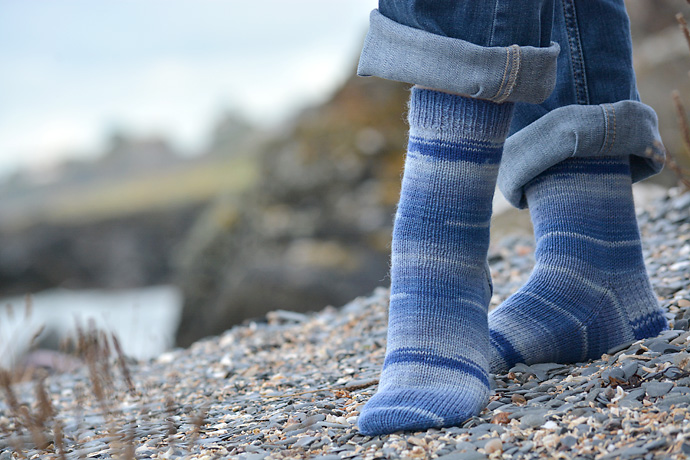
So here is a trip down memory lane…
These socks were knit to fit a UK shoe size 5/6.
You can find other sizes in the Basic Sock Pattern in 6 Sizes posts. If this is your first sock project and you need a bit more help check out my How to Knit Your First Sock Series.
I know there are lots of ways to knit socks, using short circular needles, using magic loop and using two 16”/40cm circular needles to mention just a few. My preference is to use double pointed needles as I find the wooden and bamboo needles easy on my hands and I’m so used to using them I don’t have to think about the process. I recently heard my preferred method described as old fashioned, which when it comes to knitting, isn’t necessarily a bad thing! When it comes to knitting socks, it really comes down to what is comfortable for you, and it is fun to try different methods of knitting socks until you find the one that you enjoy the most.
Yarn:
These socks were knit using Regia We Love Denim 4ply sock yarn in the Philippa colourway. You can easily substitute this yarn for any 4ply sock yarn. There are lots of beautiful sock yarns to choose from in the Knitting Squirrel Yarn Shop.
Needles:
- 3.25 mm double pointed needle (dpn) for casting on
- 2.75 mm (set of 5) bamboo dpns for knitting socks
- tapestry needle for finishing
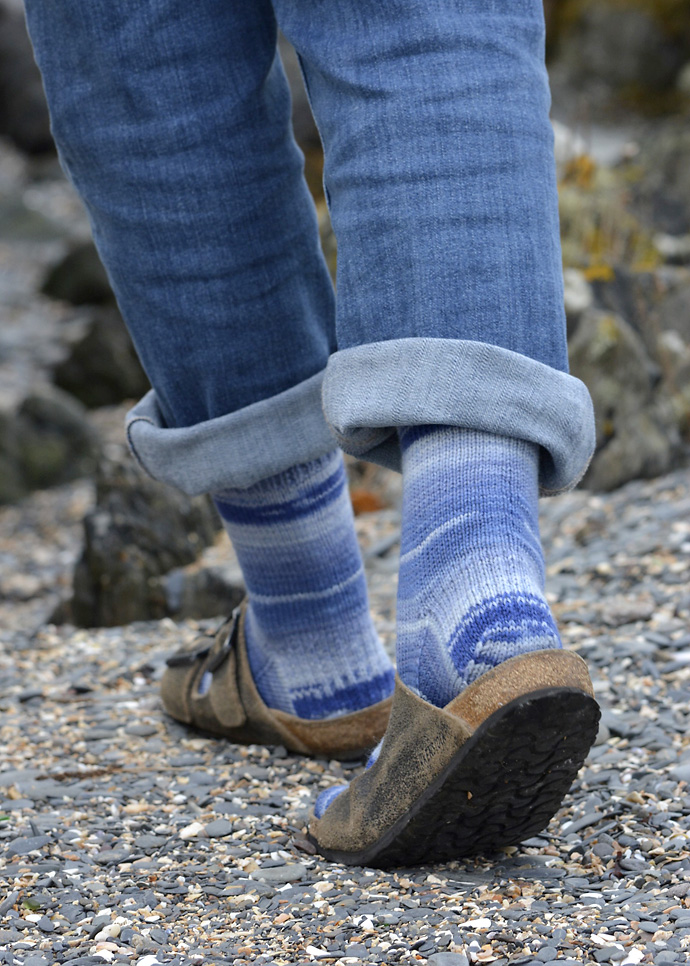
Tension:
I knit my socks to fit a UK shoe size 5/6 using a tension of 30 sts/42 rounds = 10×10 cm (4″x4″) which works out at 7.5 sts/10.5 rounds = 2.5×2.5cm (1″x1″) when knitting stocking stitch (stockinette stitch) in the round. The circumference of my foot is 21.5cm (8.5″). You don’t want your socks to be too loose when you’ve finished knitting them, so I like a little bit of negative ease. At this point, I’m going to talk in inches… sometimes it is just easier… so, 8.5 (foot circumference) x 7.5 (tension) = 63.75 stitches. I like my socks to have about 5% negative ease. So, 63.75 ÷ 100 x 95 = 60.56 stitches. I round this down to 60 stitches for knitting my socks.
Abbreviations:
double pointed needle(s) – dpn(s); stitch(es) – st(s); knit – k; purl – p; knit two stitches together – k2tog; slip slip knit – ssk; purl two stitches together – p2tog;
Cuff:
Cast on 60 stitches using 3.25mm dpn. Change to 2.75 mm dpns. I use a set of 5 dpns and have the stitches divided over 4 needles with 15 stitches on each needle.
Work knit 1, purl 1 rib for 15 rounds
Leg:
Knit 46 rounds or until the sock measures 15cm (6”) from the cast on edge. I tend to count my rows as I find it the easiest way to get matching socks.
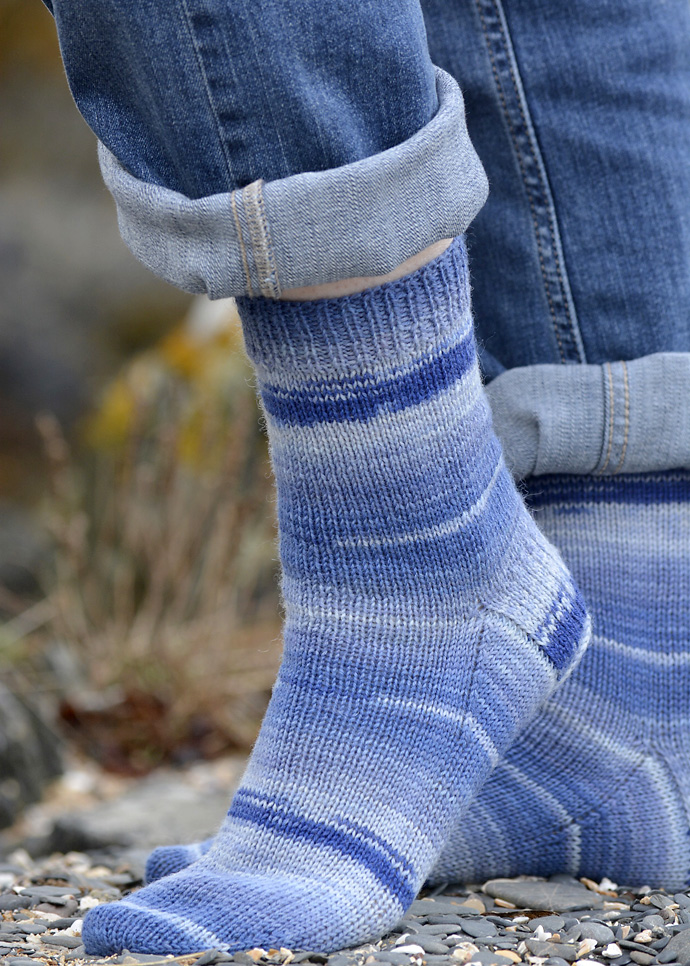
The Heel:
Heel Flap:
You are ready to work the heel flap over half of the total number of stitches (30 sts), working in rows rather than rounds. I like to have all 30 stitches on one needle. Starting with a purl row.
- Row 1: *sl 1, p1; rep from * to end.
- Row 2: sl 1, knit to end.
- Repeat rows 1 and 2 fifteen times more. A total of 32 rows.
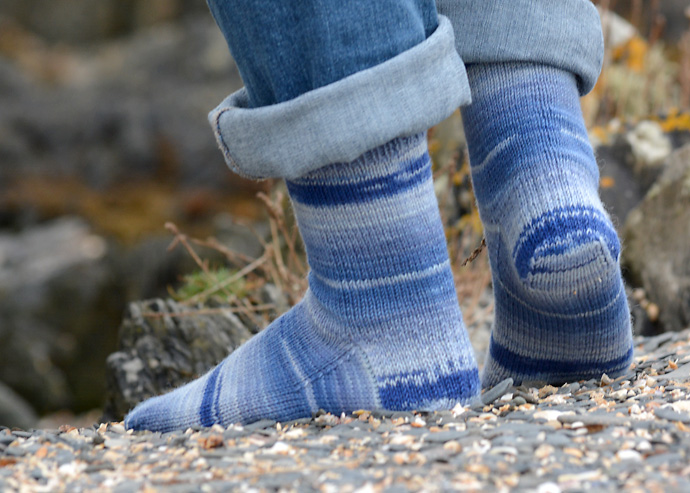
Dutch or Square Heel Turn:
I love knitting the Dutch or Square Heel Turn. It has become my “go-to” heel particularly on socks that I am knitting while travelling as I don’t have to think at all when I’m knitting. There really is virtually no counting to be done!
- Set up: p20, p2tog, turn
- Row 1: sl 1, k10, ssk, turn
- Row 2: sl 1, p10, p2tog, turn
- Repeat rows 1 and 2 until 12 stitches are left, ending with row 1.
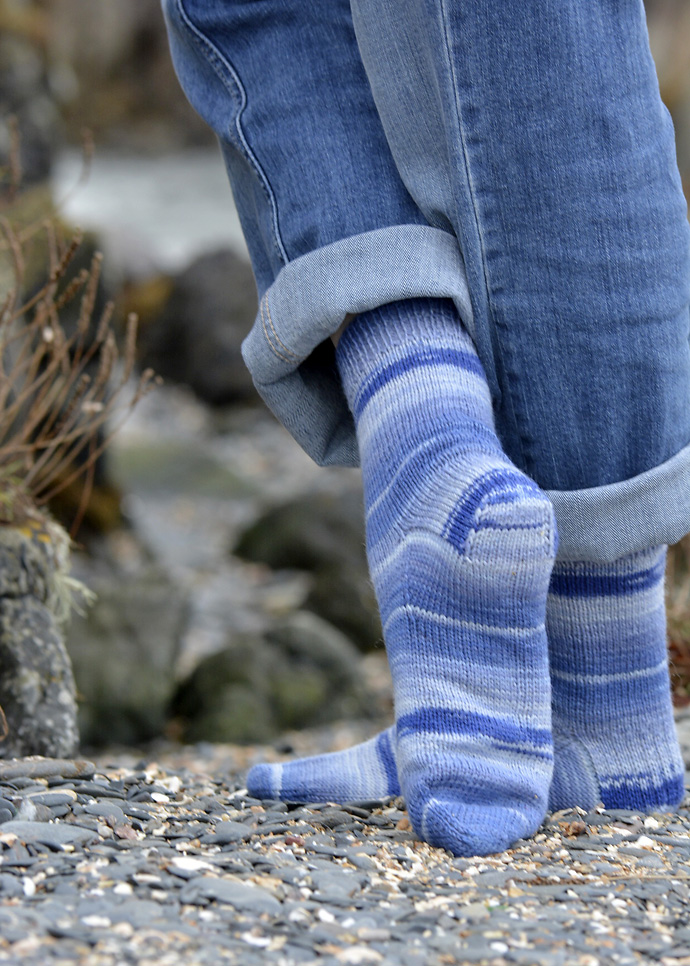
Gusset:
Continue knitting, without turning, as you will now be knitting in rounds again.
- Pick up and knit 17 stitches along the edge of the heel flap. (Needle 1)
- Knit across the 30 instep stitches. (Needles 2 and 3)
- Pick up and knit 17 stitches along the edge of the heel flap. Then knit across the first 6 stitches of the heel. (Needle 4)
This is the starting point for the following rounds.
Before you start the next round, slip the next 6 heel stitches onto needle 1. Needles 1 and 4 should have 24 stitches on each. Needles 2 and 3 should have 15 stitches on each.
- Next round: K6, k17 tbl, k30, k17 tbl, k6
- Next: k
Gusset Shaping:
- Round 1: Needle 1: k to last 3 sts, k2tog, k1; Needles 2 and 3: k; Needle 4: k1, ssk, k to end of needle.
- Round 2: k
Repeat rounds 1 and 2 until there are 15 stitches on each of the 4 needles. (60 stitches)
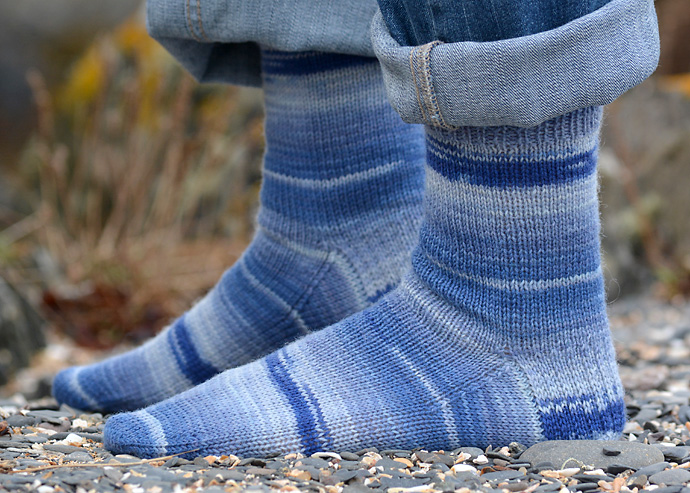
Foot:
- Knit 42 rounds or the number of rounds that you need for your foot.
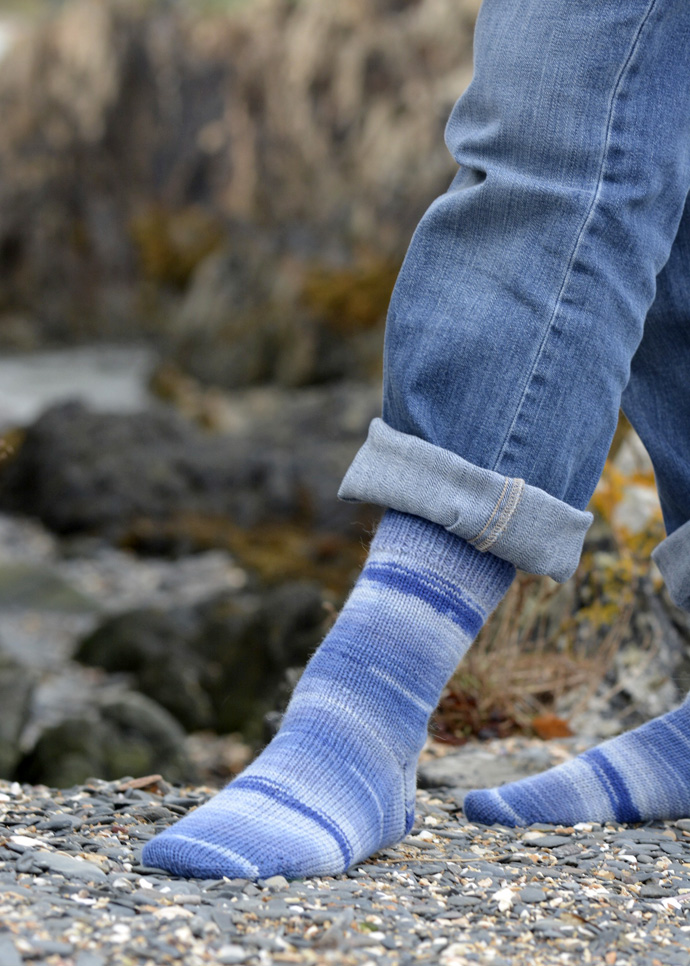
Classic Toe:
- Round 1: Needles 1 and 3: k to last 3 sts, k2tog, k1; Needles 2 and 4: k1, ssk, k to end of needle.
- Round 2: k
- Repeat rounds 1 and 2 until there are 7 sts on each needle. (28 stitches).
- Then repeat round 1 until there are 4 sts on each needle. (16 stitches).
Making sure that the toe stitches align with the heel, slip the stitches from needle 4 onto needle 1 and the stitches from needle 3 onto needle 2. 8 stitches on each needle.
- Graft the toe stitches using Kitchener Stitch.
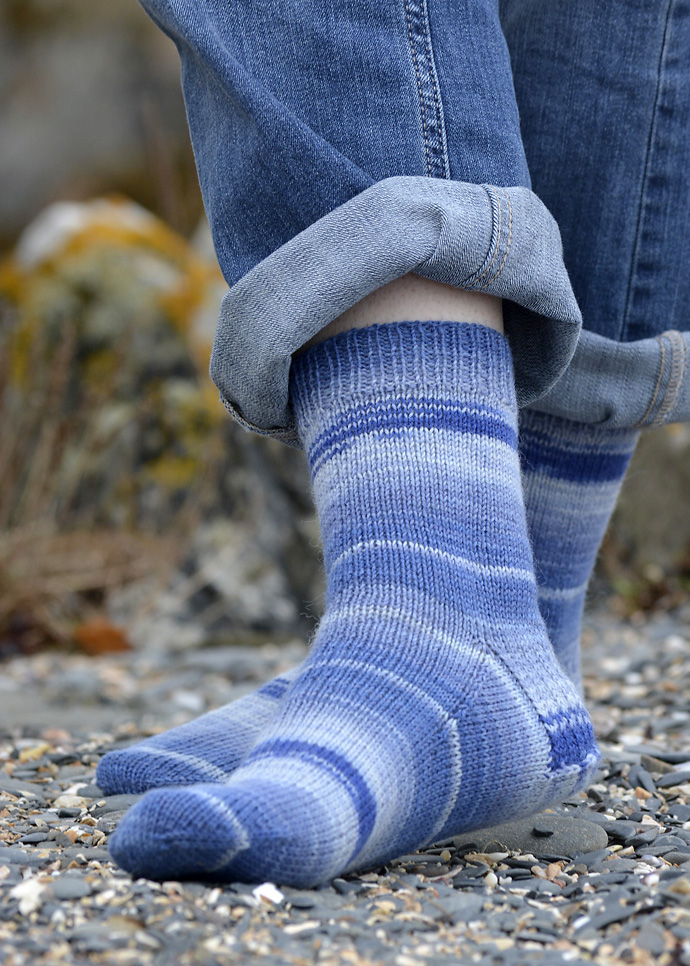
Finishing:
Weave in all loose ends. Then I wash and block the socks on sock blockers. I just find that it gives the stitches a lovely even finish. It isn’t necessary if you are intending putting the socks straight into your sock drawer but it gives them a lovely finish if you are giving them away as a gift.
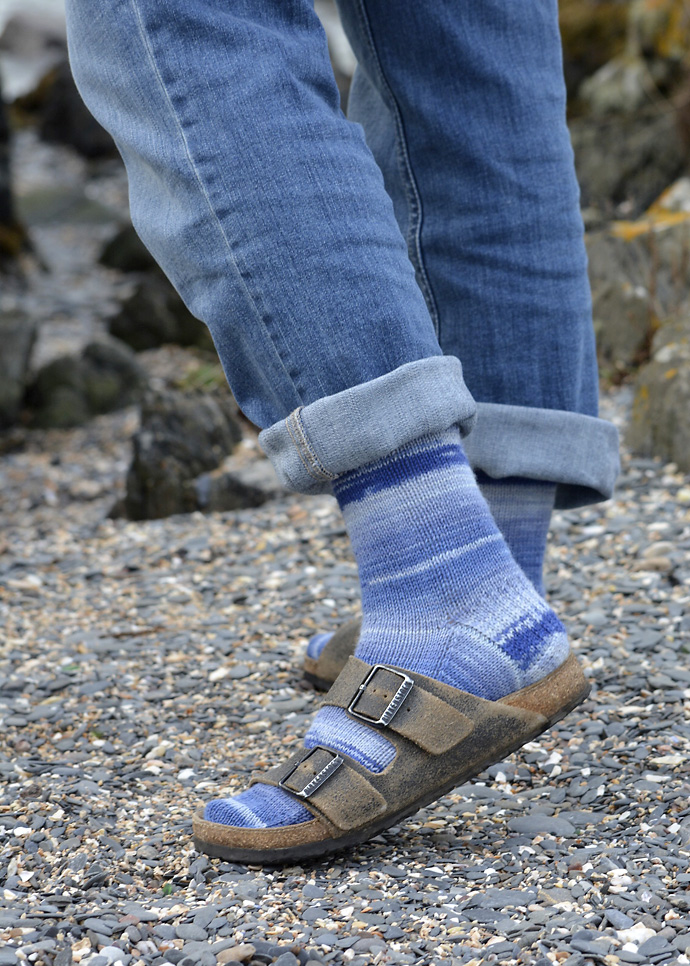
Wishing you the cosiest of toes with your newly knitted socks. If you fancy using one of our sock yarns, please take a look at the lovely selection of sock yarns in the Knitting Squirrel Yarn Shop.

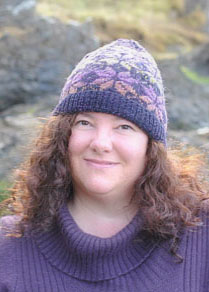
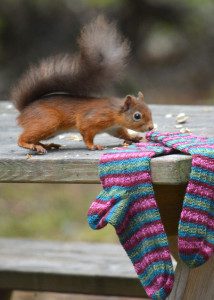
I'd love to hear from you. Let me know what you think...